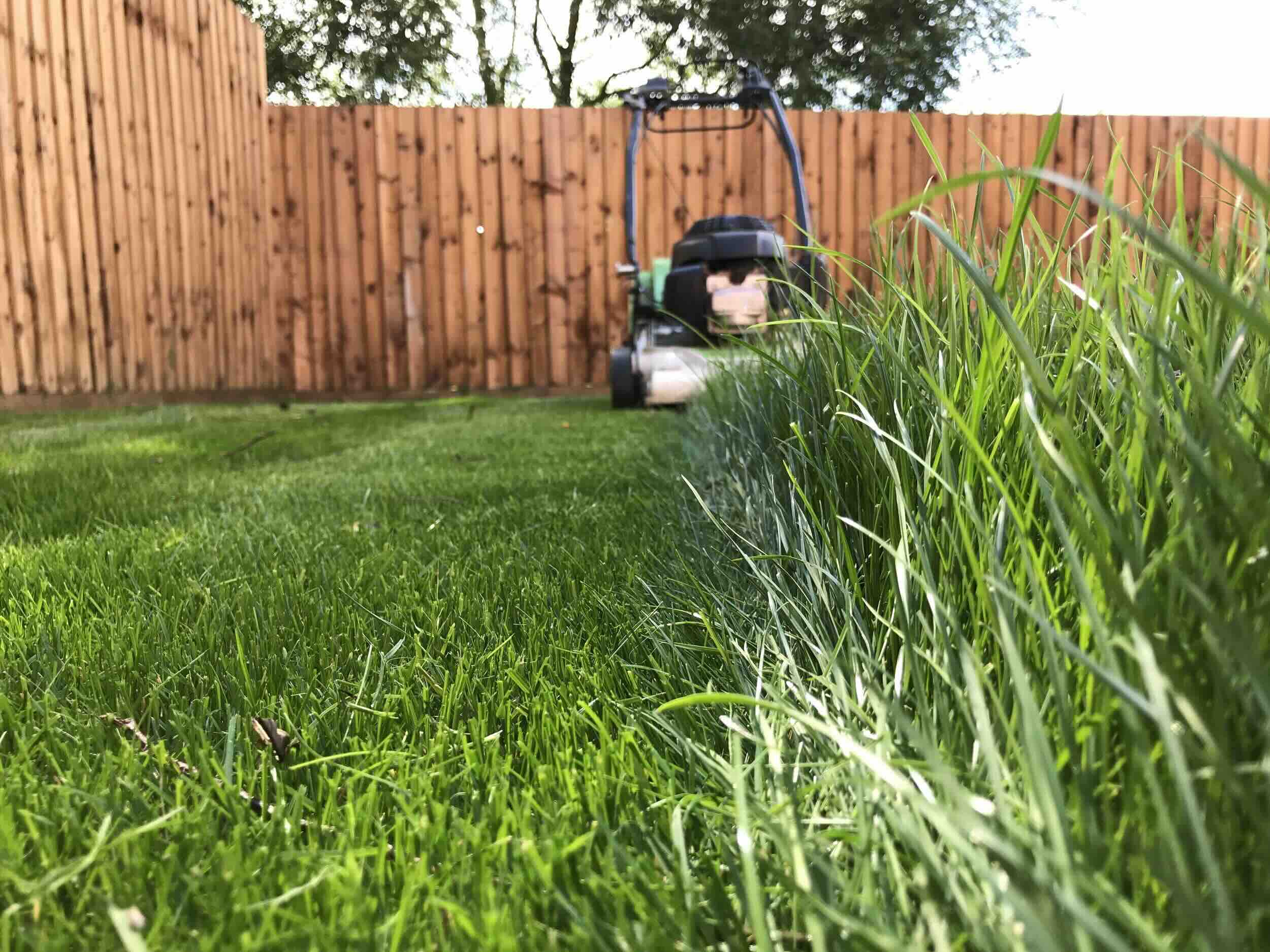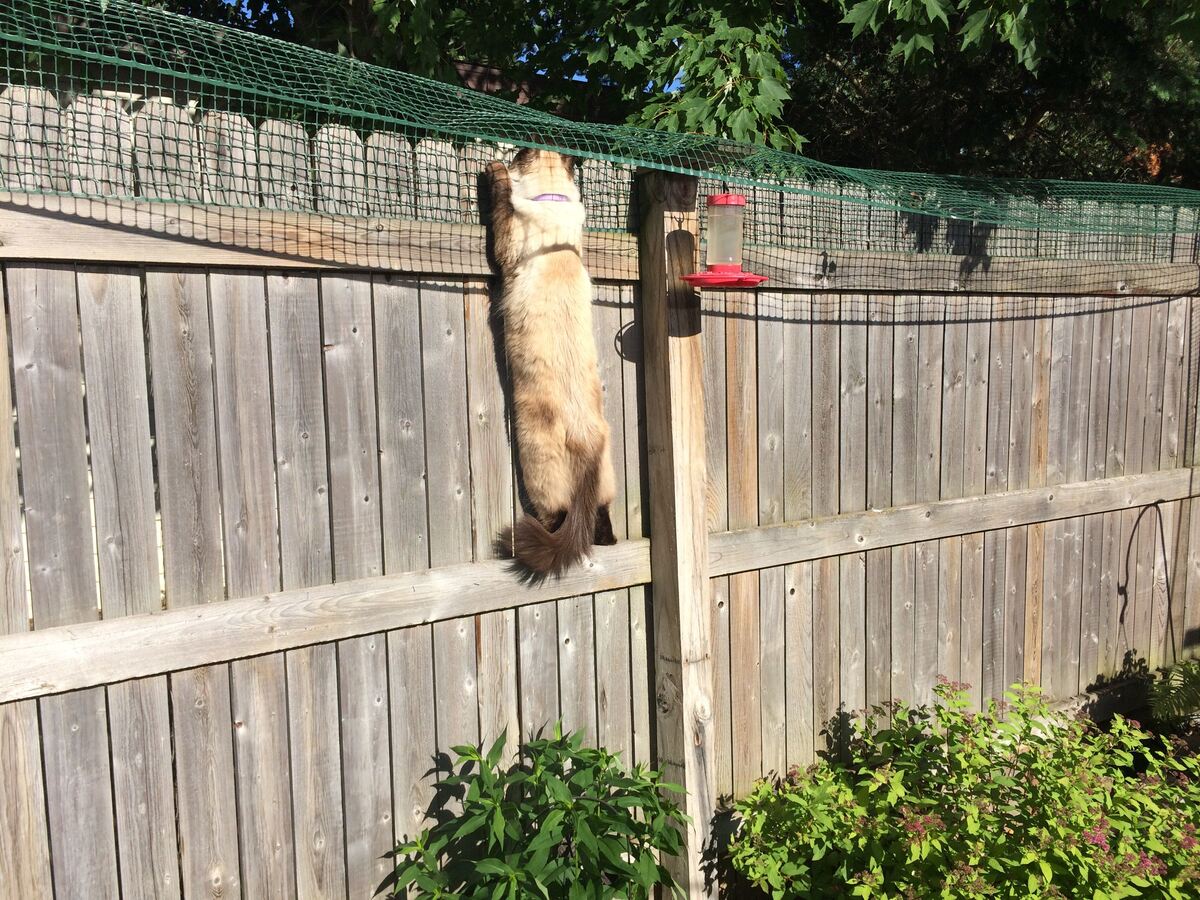Home>Gardening & Outdoor>Landscaping Ideas>How To Keep My Grass Green And Healthy


Landscaping Ideas
How To Keep My Grass Green And Healthy
Modified: February 18, 2024
Discover effective landscaping ideas to keep your grass green and healthy. Learn expert tips for maintaining a lush, vibrant lawn.
(Many of the links in this article redirect to a specific reviewed product. Your purchase of these products through affiliate links helps to generate commission for Storables.com, at no extra cost. Learn more)
Introduction
Welcome to the wonderful world of landscaping and lawn care! Maintaining a lush, green lawn can be a source of pride and joy for homeowners. Your lawn is not just a patch of grass; it's a living, breathing entity that requires tender loving care to thrive. Whether you're a seasoned lawn enthusiast or a newcomer to the realm of grassy landscapes, this guide will equip you with the knowledge and insights needed to keep your grass green and healthy throughout the year.
A vibrant, well-kept lawn serves as a picturesque backdrop for outdoor gatherings, a playground for children and pets, and a serene oasis for relaxation. However, achieving and maintaining such a lawn requires more than just sporadic mowing and watering. It involves understanding the unique characteristics of your grass, implementing proper watering and mowing techniques, providing essential nutrients through fertilization, and combating the challenges posed by weeds and pests.
In this comprehensive guide, we'll delve into the fundamental aspects of grass care, covering everything from the intricacies of different grass types to the nuances of watering schedules, mowing heights, fertilization methods, and weed control. By the end of this journey, you'll be well-equipped to nurture your lawn into a verdant, envy-inducing masterpiece.
So, roll up your sleeves, don your gardening gloves, and let's embark on this enlightening and rewarding odyssey of cultivating and maintaining a lush green carpet of grass right in your own backyard. Let's dive into the fascinating world of grass care and discover the secrets to achieving a lawn that's the envy of the neighborhood.
Key Takeaways:
- Understanding your grass type and its unique needs is crucial for maintaining a healthy lawn. Different grass species have specific watering, mowing, and care requirements, so take the time to research and tailor your lawn care practices accordingly.
- Proper watering, mowing, fertilization, and pest control are essential for nurturing a vibrant, envy-inducing lawn. By mastering these foundational aspects of grass care, you can transform your outdoor space into a lush, inviting oasis.
Read more: How To Keep Grass Green In Texas
Understanding Your Grass
Before diving into the nitty-gritty of lawn care, it’s essential to familiarize yourself with the type of grass that blankets your yard. Different grass species have distinct characteristics and requirements, so understanding your grass is the first step toward nurturing a healthy lawn.
Grasses are broadly categorized as cool-season or warm-season, based on their optimal growth patterns. Cool-season grasses, such as Kentucky bluegrass and fescue, thrive in regions with moderate temperatures and are known for their ability to withstand cold weather. On the other hand, warm-season grasses, including Bermuda grass and zoysia grass, flourish in hotter climates and exhibit peak growth during the summer months.
By identifying the specific grass species in your lawn, you can tailor your maintenance practices to suit their unique needs. Factors such as mowing height, watering frequency, and resistance to pests and diseases vary across different grass types. Therefore, take the time to research and determine the specific characteristics and care requirements of your grass species.
Furthermore, understanding the sun and shade patterns in your yard is crucial for optimizing grass health. Some grasses thrive in full sun, while others are more shade-tolerant. By observing how sunlight interacts with your lawn throughout the day, you can make informed decisions about grass selection and maintenance strategies.
So, grab a notebook and jot down the type of grass in your lawn, its growth patterns, and the predominant sunlight conditions it receives. Armed with this knowledge, you’ll be ready to embark on the journey of nurturing your grass to its full potential.
Watering Your Grass
Proper watering is a cornerstone of maintaining a vibrant, healthy lawn. However, achieving the right balance in watering can be a delicate art, as both under-watering and over-watering can have detrimental effects on your grass. Understanding the water needs of your grass and implementing effective watering practices are essential for promoting robust growth and resilience.
One of the key factors in watering your grass is to ensure deep root penetration. Rather than frequent shallow watering, which encourages shallow root systems, aim for infrequent but deep watering sessions. This encourages the grass roots to delve deeper into the soil, making them more resilient to drought and environmental stress.
It’s important to water your lawn early in the morning, preferably before 10 a.m. This allows the grass to dry off during the day, reducing the risk of fungal diseases that thrive in moist conditions. Additionally, watering in the morning minimizes water loss due to evaporation, ensuring that the grass receives an adequate supply.
Observing the signs of water stress in your grass is crucial for determining the right watering schedule. If the grass blades start to wilt or take on a bluish-gray hue, it’s a clear indication that the lawn requires watering. However, be cautious not to overwater, as this can lead to shallow root growth and create a conducive environment for fungal diseases.
When it comes to the quantity of water, a general rule of thumb is to provide around 1 inch of water per week, including rainfall. Keep in mind that this guideline can vary based on factors such as soil type, grass species, and local climate conditions. Utilizing a rain gauge or a collection of empty cans across the lawn can help you gauge the amount of water your lawn receives during each watering session.
By understanding the specific water needs of your grass and adhering to best practices in watering, you can foster a resilient and lush lawn that’s the envy of the neighborhood. With the foundational knowledge of watering in place, let’s move on to explore the art of mowing your grass to perfection.
Mowing Your Grass
Mowing is not just a routine chore; it’s a vital aspect of maintaining a healthy and visually appealing lawn. The way you mow your grass can significantly impact its overall health and appearance. By following proper mowing practices, you can encourage robust growth, enhance the density of the grass, and contribute to a well-manicured landscape.
One of the cardinal rules of mowing is to adhere to the “one-third rule.” This principle dictates that you should never remove more than one-third of the grass blade’s height in a single mowing session. Cutting more than one-third of the blade can stress the grass and impede its ability to photosynthesize and thrive. Additionally, leaving the grass slightly longer provides better shade for the soil, reducing moisture loss and inhibiting weed growth.
It’s crucial to keep your mower blades sharp to ensure clean, precise cuts. Dull blades can tear the grass, leading to ragged edges that are more susceptible to disease and moisture loss. Regularly inspect and sharpen your mower blades to maintain their cutting efficiency and promote the overall health of the grass.
Varying the mowing pattern is another effective practice for promoting healthy grass growth. Repeatedly mowing in the same direction can cause the grass to lean in that direction, resulting in a less uniform and visually appealing lawn. By altering your mowing pattern each time, you encourage the grass blades to grow more upright and reduce soil compaction.
Timing is also crucial when it comes to mowing your grass. It’s best to mow when the grass is dry to achieve a cleaner cut and prevent clumping. Mowing wet grass not only results in an uneven appearance but also creates an environment conducive to the spread of fungal diseases.
By embracing the art and science of mowing, you can transform your lawn into a verdant carpet that exudes health and vitality. With a well-maintained mowing routine in place, let’s shift our focus to the next cornerstone of grass care: fertilization.
Water your grass deeply and infrequently, early in the morning or late in the evening to reduce evaporation. This encourages deep root growth and helps keep your grass green and healthy.
Fertilizing Your Grass
Fertilization plays a pivotal role in fortifying your grass with essential nutrients, fostering vigorous growth, and enhancing its resilience against environmental stressors. By providing the right balance of nutrients at the appropriate times, you can elevate your lawn from ordinary to extraordinary, transforming it into a lush, vibrant expanse of greenery.
Before embarking on a fertilization regimen, it’s crucial to understand the specific nutritional requirements of your grass. Nitrogen, phosphorus, and potassium are the primary nutrients that grass needs in varying quantities. Nitrogen promotes leaf and stem growth, phosphorus supports root development, and potassium aids in overall plant health and disease resistance.
Conducting a soil test can provide valuable insights into the nutrient levels and pH balance of your lawn’s soil. Armed with this information, you can tailor your fertilization approach to address any deficiencies and optimize the soil’s fertility. Soil testing also helps prevent over-fertilization, which can lead to nutrient runoff and environmental pollution.
Timing is crucial when it comes to fertilizing your grass. For cool-season grasses, early fall and late spring are ideal times for fertilization, coinciding with their peak growth periods. Warm-season grasses, on the other hand, benefit from fertilization during their active growth phase in late spring and summer.
Applying the correct amount of fertilizer is essential for preventing nutrient imbalances and minimizing the risk of environmental harm. Over-fertilization can lead to excessive foliage growth, making the grass more susceptible to diseases and environmental stress. Conversely, under-fertilization can result in lackluster growth and diminished resilience.
Utilizing a slow-release fertilizer can provide sustained nourishment to your grass over an extended period, promoting steady growth and reducing the risk of nutrient leaching. Additionally, incorporating organic fertilizers into your regimen can enhance soil structure and microbial activity, fostering a healthier and more vibrant lawn in the long run.
By mastering the art of fertilization and providing your grass with the nutrients it craves, you can elevate the health and beauty of your lawn to new heights. With a well-rounded understanding of fertilization, let’s delve into the strategies for combating weeds and pests to preserve the pristine condition of your grass.
Read more: How To Keep Your Grass Green
Dealing with Weeds and Pests
Weeds and pests can pose significant challenges to the health and aesthetics of your lawn, but with the right strategies and vigilance, you can effectively combat these intruders and preserve the pristine condition of your grass.
One of the most effective approaches to weed control is maintaining a dense, healthy lawn. A robust stand of grass leaves little room for weeds to establish themselves, as the grass shades the soil, inhibiting weed seed germination and growth. Proper fertilization, watering, and mowing practices contribute to the density and vigor of the grass, creating an inhospitable environment for weeds.
In cases where weeds do emerge, targeted removal or spot treatment can be effective. Hand-pulling weeds or using specialized tools to extract them at the root level can prevent their spread and minimize their impact on the lawn. For persistent or widespread weed infestations, employing herbicides specifically formulated for the types of weeds present can provide effective control while minimizing harm to desirable vegetation.
When it comes to pest management, identifying the specific pests plaguing your lawn is crucial for implementing targeted control measures. Insects such as grubs, chinch bugs, and armyworms can wreak havoc on grass, causing wilting, discoloration, and visible damage. Utilizing insecticidal treatments tailored to the type of pests present can help mitigate their impact and protect the grass from further harm.
Encouraging natural predators of lawn pests, such as birds and beneficial insects, can also contribute to pest control. Creating a hospitable environment for these natural allies, such as providing water sources and minimizing pesticide use, can help maintain a balanced ecosystem in your lawn, reducing the prevalence of destructive pests.
Implementing integrated pest management (IPM) practices, which emphasize preventive measures, regular monitoring, and targeted interventions, can help minimize the reliance on chemical treatments while effectively managing weed and pest issues. By combining cultural, biological, and chemical control methods judiciously, you can maintain a healthy and resilient lawn while minimizing the impact on the environment.
By adopting a proactive and holistic approach to weed and pest management, you can safeguard the beauty and vitality of your lawn, ensuring that it remains a source of pride and enjoyment for years to come. With a comprehensive understanding of weed and pest control, let’s conclude our exploration of grass care and celebrate the knowledge gained.
Conclusion
Congratulations on completing this enlightening journey through the realm of grass care and landscaping! Armed with a wealth of knowledge and insights, you are well-equipped to cultivate and maintain a lush, healthy lawn that serves as a picturesque centerpiece of your outdoor space.
Understanding the unique characteristics of your grass, including its species, growth patterns, and sunlight requirements, forms the foundation for tailored and effective lawn care practices. By harnessing this knowledge, you can optimize your maintenance efforts and nurture your grass to its full potential.
Watering your grass with precision and care, ensuring deep root penetration and optimal moisture levels, is essential for promoting resilience and vitality. By adhering to best practices in watering, you can lay the groundwork for a thriving, verdant lawn that captivates the eye and invites barefoot strolls on a cool summer evening.
The art of mowing, encompassing the one-third rule, sharp blades, varied patterns, and strategic timing, allows you to sculpt your lawn into a lush, uniform carpet that exudes health and vibrancy. Embracing the principles of proper mowing empowers you to elevate the aesthetics and resilience of your grass with each pass of the mower.
Fertilization emerges as a cornerstone of grass care, providing essential nutrients to fuel robust growth, enhance color and density, and fortify the grass against environmental stressors. By mastering the art of fertilization, you can elevate your lawn from ordinary to extraordinary, creating a green oasis that beckons with its lush beauty.
Dealing with weeds and pests demands vigilance, knowledge, and a proactive stance. By implementing targeted control measures, promoting a dense and healthy lawn, and embracing integrated pest management practices, you can safeguard your grass from the encroachment of unwanted intruders and preserve its pristine condition.
As you embark on this journey of grass care and landscaping, remember that each step you take, whether it’s watering with precision, mowing with finesse, or nurturing the soil with care, contributes to the creation of a vibrant, inviting lawn. Your dedication and attentiveness will be reflected in the lush, healthy expanse of greenery that graces your outdoor sanctuary.
So, take pride in the knowledge you’ve gained and the commitment you’ve shown to the well-being of your lawn. With these insights at your disposal, you are poised to transform your outdoor space into a captivating haven of natural beauty and tranquility. Embrace the journey, revel in the process, and savor the rewards of a lawn that’s the envy of the neighborhood.
Frequently Asked Questions about How To Keep My Grass Green And Healthy
Was this page helpful?
At Storables.com, we guarantee accurate and reliable information. Our content, validated by Expert Board Contributors, is crafted following stringent Editorial Policies. We're committed to providing you with well-researched, expert-backed insights for all your informational needs.















0 thoughts on “How To Keep My Grass Green And Healthy”